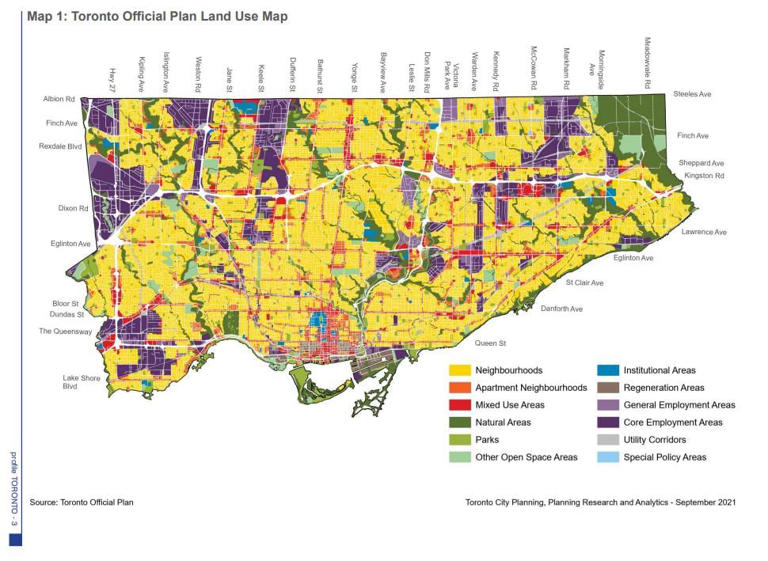
Image by Kristian Fagerstrom.
No one wants a nuclear reactor in their backyard. It’s an eyesore and a health hazard, not to mention the hit to your property values. And don’t forget the existential danger. One small miscalculation and boom, there goes the neighborhood!
In the 1970s, in the southwest corner of Germany, the tiny community of Wyhl was bracing for the construction of just such a nuclear reactor in its backyard. Something even worse loomed on the horizon: a vast industrial zone with new chemical plants and eight nuclear energy complexes that would transform the entire region around that town and stretch into nearby France and Switzerland. The governments of the three countries and the energy industry were all behind the project.
Even the residents of Wyhl seemed to agree. By a slim 55%, they supported a referendum to sell the land needed for the power plant. In the winter of 1975, bulldozers began to clear the site.
Suddenly, something unexpected happened. Civic groups and environmentalists decided to make their stand in little Wyhl and managed to block the construction of that nuclear reactor. Then, as the organizing accelerated, the entire tri-country initiative unraveled.
It was a stunning success for a global antinuclear movement that was just then gaining strength. The next year, in the United States, the Clamshell Alliance launched a campaign to stop the construction of the proposed Seabrook nuclear power plant in New Hampshire, which they managed to delay for some time.
A few years later, critics of the antinuclear protests would dismiss such movements with the acronym NIMBY for Not In My Backyard. NIMBY movements would, however, ultimately target a range of dirty and dangerous projects from waste incinerators to uranium mines.
A NIMBY approach, in fact, is often the last option for communities facing the full force of powerful energy lobbies, the slingshot that little Davids deploy against a humongous Goliath.
That very same slingshot is now being used to try to stop an energy megaproject in eastern Washington state. A local civic group, Tri-City CARES, has squared off against a similar combination of government and industry to oppose a project they say will harm wildlife, adversely affect tourism, impinge on Native American cultural property, and put public safety at risk.
But that megaproject is not a nuclear power plant or a toxic waste dump. The Horse Heaven Hills project near Kennewick is, in fact, a future wind farm projected to power up to 300,000 homes and reduce the state’s dependency on both fossil fuels and nuclear energy.
Windmills: Aren’t they part of the solution, not part of the problem?
Critics of that Washington state project are, in fact, part of a larger movement whose criticism of “industrial wind energy development” suggests that they’re not just quixotically tilting at windmills but challenging unchecked corporate power. Left unsaid, however, is that the fossil-fuel industry and conservative think tanks like the Manhattan Institute have been working overtime against wind and solar renewable energy projects, often plowing money into NIMBY-like front groups. (Donald Trump has, of course, sworn to scrap offshore wind projects should he become president again.)
It’s a reminder that the powerful, too, have found uses for NIMBYism. Rich neighborhoods have long mobilized against homeless shelters and low-income housing, just as rich countries have long outsourced their mineral needs and dirty manufacturing to poorer ones.
But even if you remove the right-wing funders and oil executives from the equation and assume the best of intentions on the part of organizations like Tri-City CARES — and there’s good reason to believe that the Washington activists genuinely care about hawks and Native American cultural property — the question remains: what sacrifices must be made to achieve the necessary transition away from fossil fuels and who will make those sacrifices?
Thanks to all the recent images of devastating typhoon and hurricane damage and record flooding, it’s obvious that much of the world’s infrastructure is not built to withstand the growing stresses of climate change. As if that’s not bad enough, it’s even clearer that political infrastructure the world over, in failing to face the issue of sacrifice, can’t effectively deal with the climate challenge either.
The Need for Sacrifice
The era of unrestrained growth is nearly at an end. In ever more parts of the world, it’s no longer possible to dig, discharge, and destroy without regard for the environment or community health. Climate change puts an exclamation point on this fact. The industrial era we’ve passed through in the last centuries has produced unprecedented wealth but has also generated enough carbon emissions to threaten the very future of humanity. To reach the goals of the 2016 Paris agreement on climate change and the many net-carbon zero pledges that countries have made, at a minimum humanity would have to forgo all new fossil-fuel projects.
Although the use of oil, natural gas, and coal has already produced a growing global disaster, those aren’t the only problems we face. The United Nations projects that, by 2060, the consumption of natural resources globally — including food, water, and minerals, those basics of human life — will rise 60% above 2020 levels. Even the World Economic Forum, that pillar of the capitalist global economic system, acknowledges that the planet can’t support such an insatiable demand and points out that rich countries, which consume six times more per capita than the rest of the world, will somehow have to tighten their belts.
Alas, renewable energy doesn’t grow on trees. To capture the power of the sun, the wind, and the tides requires machinery and batteries that draw on a wide range of materials like lithium, copper, and rare earth elements. People in the Global South are already organizing against efforts to turn their communities into “sacrifice zones” that produce such critical raw materials for an energy transition far away in the Global North. At the same time, communities across the United States and Europe are organizing against similar mines in their own backyards. Then there’s the question of where to put all those solar arrays and wind farms, which have been generating NIMBY responses in the United States from the coast of New England to the deserts of the Southwest.
These, then, are the three areas of sacrifice on Planet Earth in 2024: giving up the income generated by fossil-fuel projects, cutting back on the consumption of energy and other resources, and putting up with the negative consequences of both mining and renewable energy projects. Not everyone agrees that such sacrifices have to be made. Donald Trump and his allies have, of course, promised to “drill, baby, drill” from day one of a second term.
Sadly enough, almost everyone agrees that, if such sacrifices are indeed necessary, it should be someone else who makes them.
In an era of unlimited growth, the political challenge was to determine how to divvy up the rewards of economic expansion. Today’s challenge, in a world where growth has run amok, is to determine how to evenly distribute the costs of sacrifice.
Democracy and Sacrifice
Autocrats generally don’t lose sleep worrying about sacrifice. They’re willing to steamroll over protest as readily as they’d bulldoze the land for a new petrochemical plant. When China wanted to build a large new dam on the Yangtze River, it relocated the 1.5 million people in its path and flooded the area, submerging 13 cities, over 1,200 archaeological sites, and 30,000 hectares of farmland.
Democracies often functioned the same way before the NIMBY era. Of course, there’s always been an exception made for the wealthy: how many toxic waste dumps grace Beverly Hills? Or consider the career of urban planner Robert Moses, who rebuilt the roads and parks of New York City with only a few speedbumps along the way. He was finally stopped in his tracks in, of all places, that city’s Greenwich Village by architecture critic Jane Jacobs and her band of wealthy and middle-class protestors determined to block a Lower Manhattan Expressway. New York’s poorer outer-borough residents couldn’t similarly stop the Cross Bronx Expressway.
Although a product of classical Greece, democracy has only truly flourished in the industrial era. Democratic politicians have regularly gained office by promising the fruits of economic expansion: infrastructure, jobs, social services, and tax cuts. If it’s not wartime, politicians might as well sign their political death warrants if they ask people to tighten their belts. Sure, President John F. Kennedy famously said, “Ask not what your country can do for you — ask what you can do for your country” and promoted the Peace Corps for idealistic young people. But he won office by making the same promises as other politicians and, as president, made famous the phrase “a rising tide lifts all boats,” an image of unrestrained growth that has become ominously prophetic in an era of elevated ocean levels and increased flooding.
In 1977, when President Jimmy Carter donned a sweater to give his famous “spirit of sacrifice” speech on the need to reduce energy consumption, he told the truth to the American people: “If we all cooperate and make modest sacrifices, if we learn to live thriftily and remember the importance of helping our neighbors, then we can find ways to adjust, and to make our society more efficient and our own lives more enjoyable and productive.”
Mocked for his earnestness and his sweater choice, Carter was, unsurprisingly, a one-term president.
Democracy, like capitalism, has remained remarkably focused on short-term gain and politicians similarly remain prisoners of the election cycle. What’s the point of pushing policies that will yield results only 10 or 20 years in the future when those policymakers are unlikely to be in office any longer? Democratic politicians regularly push sacrifice off to the future in the same way that NIMBY-energized communities push sacrifice off to other places. Whether it’s your unborn grandchildren or people living in the Amazon rain forest displaced by oil companies, the unsustainable prosperity of the wealthy depends on the sacrifices of (often distant) others.
Sharing the Sacrifice
With its Green Deal, the European Union (EU) has embarked on an effort to outpace the United States and China in its transition away from fossil fuels. The challenge for the EU is to find sufficient amounts of critical raw materials for the Green Deal’s electric cars, solar panels, and wind turbines — especially lithium for the lithium-ion batteries that lie at the heart of the transformation.
To get that lithium, the EU is looking in some obvious places like the “lithium triangle” of Argentina, Bolivia, and Chile. But it doesn’t want to be completely dependent on outside suppliers, since there’s a lot of competition for that lithium.
Enter Serbia.
The Jadar mine in western Serbia has one of the largest deposits of lithium in the world. For the EU, it’s a no-brainer to push for the further development of a mine that could provide 58,000 tons of lithium carbonate annually and meet nearly all of Europe’s lithium needs. In August, the EU signed a “strategic partnership on sustainable raw materials, battery value chains, and electric vehicles” with Serbia, which is still in the process of joining the EU. Exploiting the Jadar deposits is a no-brainer for the Serbian government as well. It means jobs, a significant boost to the country’s gross domestic product, and a way to advance its claim to EU membership.
Serbian environmentalists, however, don’t agree. They’ve mobilized tens of thousands of people to protest the plan to dig up the lithium and other minerals from Jadar. They do acknowledge the importance of those materials but think the EU should develop its own lithium resources and not pollute Serbia’s rivers with endless mine run-off.
Many countries face the same challenge as Serbia. Home to one of the largest nickel deposits in the world, Indonesia has tried to use the extraction and processing of that strategic mineral to break into the ranks of the globe’s most developed countries. The communities around the nickel mines are, however, anything but gung-ho about that plan. Even wealthy countries like Sweden and the United States, eager to reduce their mineral dependency on China, have faced community backlash over plans to expand their mining footprints.
Democracies are not well-suited to address the question of sacrifice, since those who shoulder the costs have few options to resist the many who want to enjoy the benefits. NIMBY movements are one of the few mechanisms by which the minority can resist such a tyranny of the majority.
But then, how to prevent that other kind of NIMBY that displaces sacrifice from the relatively rich to the relatively poor?
Getting to YIMBY
Wyhl’s successful campaign of “no” to nuclear power in the 1970s was only half the story. Equally important was the “yes” half.
Alongside their opposition to nuclear power, the German environmentalists in the southeast corner of the country lobbied for funding research on renewable energy. From such seed money grew the first large-scale solar and wind projects there. The rejection of nuclear power, which would eventually become a federal pledge in Germany to close down the nuclear industry, prepared the ground for that country’s clean-energy miracle.
That’s not all. German activists realized that the mainstream parties, laser-focused on economic growth, would just find another part of the country in which to build their megaprojects. Environmentalists understood that they needed a different kind of vehicle to support the country’s energy transformation. Thus was born Germany’s Green Party.
One key lesson from the Wyhl story is the power of participation. NIMBY movements, when they battle corporate power, weaponize powerlessness. Residents demand to be consulted. They want a place at the table to create their own energy solutions. Rather than a sign that the political system can accommodate minority viewpoints, NIMBY movements demonstrate that the political system is broken. It shouldn’t be a Darwinian struggle over who makes sacrifices for the good of the whole. Decisions should be made collectively in a deliberative process, ideally within a larger federal framework that requires all stakeholders to shoulder a portion of the burden.
As in the 1970s, the political parties of today seem remarkably incapable of charting a path away from unsustainable growth and the imposition of sacrifice on the unwilling. The Green Party in Germany transformed Wyhl’s anti-nuclear politics into NIABY — not in anyone’s backyard. At this critical juncture in the transition from fossil fuels, it’s necessary to move from discrete NIMBY protests against offshore drilling and natural gas pipelines to a NIABY approach to all oil, gas, and coal projects.
The parallel expansion of sustainable energy will require new political models for distributing the costs and benefits of the mining of critical raw materials and the siting of solar and wind projects. Here again, Germany provides inspiration. The country’s first town powered fully by renewable sources, Wolfhagen, assumed control over its electricity grid and created a citizen-run cooperative to make decisions about its energy future. When communities are involved in sharing the benefits (through lowered energy costs) as well as the costs (the placement of solar and wind projects), they are more likely to embrace “Yes In My Backyard” or YIMBY. When everyone is at the table making decisions, the slingshot of NIMBY gathers dust in the closet.
In this new spirit of sacrifice, we should be asking not what the planet can do for us but what we can do for the planet. The planet is telling us that sacrifice is necessary because there’s just not enough stuff (minerals, land, water) to go around. Autocrats can’t be trusted to make such decisions. Conventional politicians in democracies are trapped in the politics of growth and consumption. The wealthy, with a few exceptions, won’t voluntarily give up their privileges.
It falls to the rest of us to step in and make such decisions about sacrifice at a community level. Meanwhile, at the national and international level, new political parties that are radically democratic, embrace post-growth economics, and put the planet first will be indispensable for larger systemic change.
If we can’t get to YIMBY and make fair decisions about near-term sacrifices, the end game is clear. When the planet goes into a carbon-induced death spiral, we’ll all, rich and poor alike, be forced to make the ultimate sacrifice.
This piece first appeared on TomDispatch.


